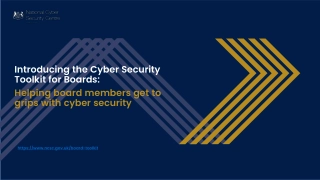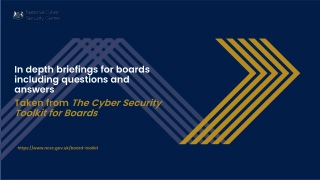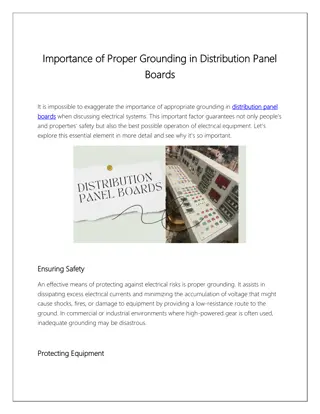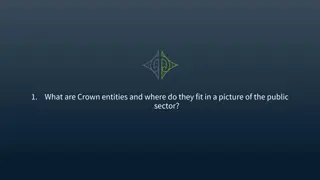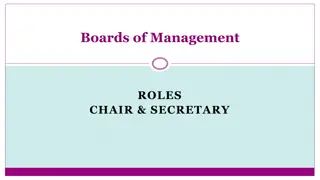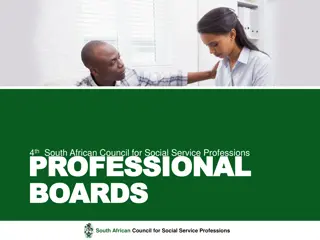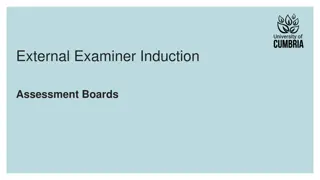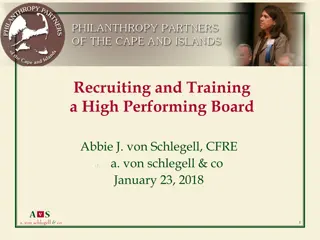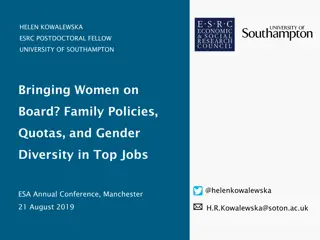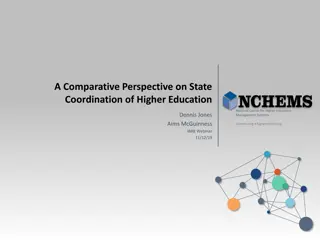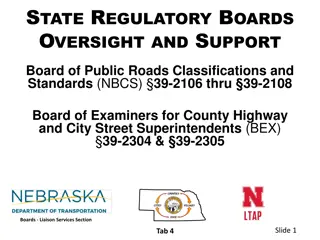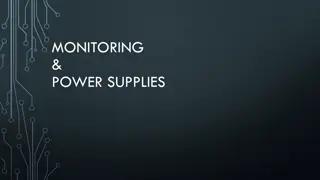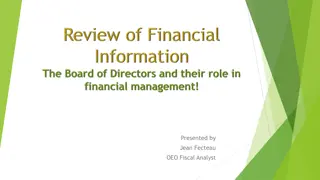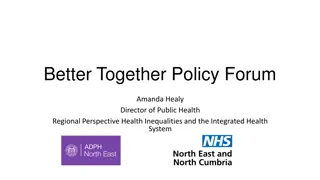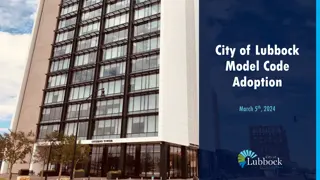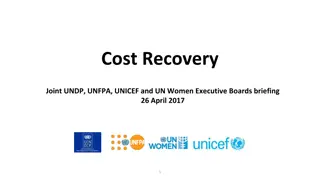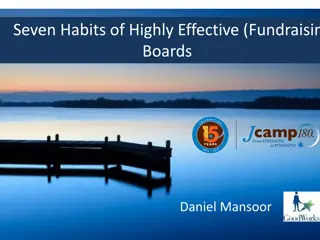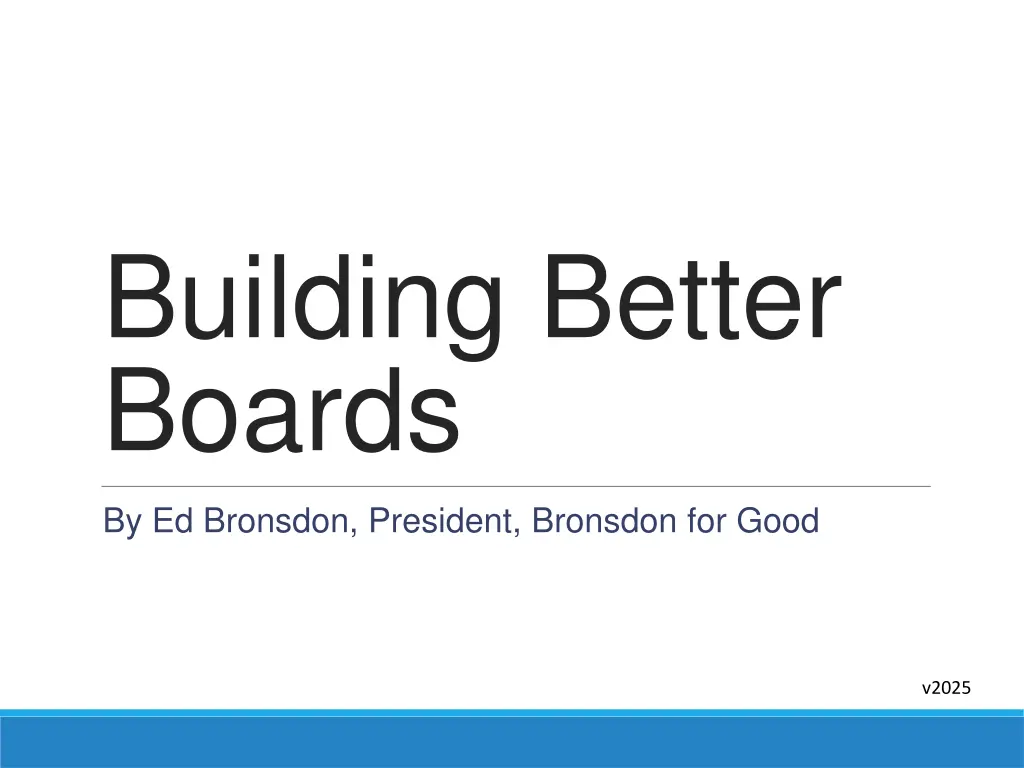
Effective Board Governance Practices for Nonprofits
Discover best practices for building better boards in nonprofit organizations with a focus on strategic recruitment, cultivating board members, and understanding board vs. staff roles. Learn how to assess governance needs, pursue best practices, and engage in an ongoing cycle of board development for a successful nonprofit organization.
Download Presentation

Please find below an Image/Link to download the presentation.
The content on the website is provided AS IS for your information and personal use only. It may not be sold, licensed, or shared on other websites without obtaining consent from the author. If you encounter any issues during the download, it is possible that the publisher has removed the file from their server.
You are allowed to download the files provided on this website for personal or commercial use, subject to the condition that they are used lawfully. All files are the property of their respective owners.
The content on the website is provided AS IS for your information and personal use only. It may not be sold, licensed, or shared on other websites without obtaining consent from the author.
E N D
Presentation Transcript
Building Better Boards By Ed Bronsdon, President, Bronsdon for Good v2025
Session Presenter Ed Bronsdon Bronsdon for Good, LLC Mission driven, business minded consulting for nonprofits and their leaders edbronsdon@icloud.com 206.499.5821
Introduce best practices of The Board-Building Cycle 1 Review and showcase the three phases of building better boards 2 Learning Objectives How to put together an action plan to engage better board governance work for your organization 3
Key Reference Tools: 1) The Board-Building Cycle Susan S. Meier 2) BoardSource Membership 3) BoardSource Board Assessment 4) Five Life Stages of Nonprofit Organizations Judith Sharken Simon
1. What are your Board Governance needs now and for the future? 2. Do you have agreement to pursue best practices?If so, then conduct a self-assessment 3. Do all involved understand board vs staff roles? If not, educate. Key Questions 4. Do you have agreement on who will do what and when? Engage a task force or committee for follow up. 5. How do you eat an elephant? Three phases for follow up: Recruit + Engage + Revitalize Remember, it is an ongoing cycle.
Phase 1: Strategic Recruitment Three step process: 1) Identify + 2) Cultivate + 3) Recruit
Phase 1: Strategic Recruitment Step 1: Identify the future needs of the board. Determine the diversity of skills, knowledge, backgrounds, and perspectives you need to implement the strategic plan or framework and address upcoming opportunities and challenges. What do you have? What is missing? Step 2: Cultivate potential board members and identify individuals with the desired characteristics. Ask current board members, senior staff, past board leaders, and key supporters to suggest potential candidates, but also seek diverse prospects from beyond familiar circles of connections. Find ways to connect with candidates, get them interested in your organization, and keep them informed of your process. Step 3: Recruit prospects. Describe why prospective members are wanted and needed. Explain THE BOARD-BUILDING CYCLE 13 Introduction expectations and responsibilities of board members, and don t minimize requirements. Invite questions, elicit prospects interest, and find out if they are prepared to serve.
Phase 2: Effective Engagement Also three steps: 1) Orient + 2) Involve + 3) Educate
Phase 2: Effective Engagement Step 4: Orient new board members to the organization and to the board, explaining the history, programs, pressing issues, finances, facilities, bylaws, and organizational chart. Share information on committees, board member responsibilities, current board composition, and key staff members. Speak to your board s culture and how board members engage with one another in discussions and decision making. Assign a board mentor to each new board member. Step 5: Involve all board members. Discover their interests, talents, and availability. Involve them in committees or task forces. Solicit feedback. Hold everyone accountable. Identify emerging leaders. Express appreciation for work well done. Step 6: Educate the board. Share information about your mission area, programs, community, and good governance. Promote exploration of issues facing the organization. Hold retreats and encourage board development activities by sending board members to seminars and workshops. Don t hide difficulties.
Phase 3: Intentional Revitalization And yes, three more steps: 1. Evaluate + 2. Rotate + 3. Celebrate
Phase 3: Effective Engagement Step 7: Evaluate the board as a whole, as well as individual board members. Engage the board in assessing its own performance, and identify ways in which the board can improve its effectiveness. Encourage individual self- assessment. Examine how the board and chief executive work as a team. Step 8: Rotate board members. Establish term limits. Do not automatically re-elect board members for an additional term; consider the board s needs and the board member s performance. Explore the feasibility of asking inactive members to retire from the board. Continually develop new leadership. Step 9: Celebrate! Recognize genuine victories and progress, no matter how small. Acknowledge individual contributions to the board, the organization, and the community. Honor those who have excelled in their board service
1. What are your Board Governance needs now and for the future? 2. Do you have agreement to pursue best practices?If so, then conduct a self-assessment 3. Do all involved understand board vs staff roles? If not, educate. Key Questions 4. Do you have agreement on who will do what and when? Engage a task force or committee for follow up. 5. How do you eat an elephant? Three phases for follow up: Recruit + Engage + Revitalize Remember, it is an ongoing cycle.
Putting together an action plan for your board BOARD GOVERNANCE Issue What are _____ Board Governance needs now and for the future? Is there agreement on a call to action? We may not need consensus, but do seek a strong majority to move forward Discussion Discuss as a board at April 30, ___ meeting Recommendation If agreement, then act. Who Board When April 30, ____ Educate and Communicate: Utilize The Board-Building Cycle book as a framework for best practices; confirm Who will do What by When Board Governance Work Group >> April 30, ____ Executive Com. >> Full Board More details in the notes below. Use best practices to Intentionally Revitalize the board and our actions to support the future needs of the organization Board & E.D. / CEO Beginning ____ + timeline going forward Board-Building Cycle 1. Strategic Recruitment Effective Engagement Intentional Revitalization 2. 3. Should this framework be used? If agreement, then conduct board self- assessment ____________ Use BoardSource tool Each Board Member By May 31, ____ (self-assess); each Board Member
Is there mutual understanding of these differing roles? Clarify through education. _________ By July 1, _____ through Board Assessment By July 1, _____ Be clear about Board vs Staff roles. Is that what is best for the future of _________ ____________ Board & Executive Staff Currently a relatively passive board; Should we utilize the BoardSource tool to assess this? Cost? If so, Executive Summary and Recommendations for follow up Yes? No? Need more info? Board By August 1, ___ Assess board efficacy What is our division of labor as a board? What are we called to do? Job description? ____________ ________ By Oct. 31, __ Use recommendations from the board assessment to update our Board Governance Committees? Term limits? Recruitment? Orientation? Executive Com titles? Elections? ____________ ____________ ________ By Oct. 31, ___ Renew / refresh board engagement by individual board members and the board collectively
____________ What are annual metrics to keep us on the renewed track? ________ By August 31, __ Sustain the renewal of board engagement so that Board Governance best practices are codified into regular annual, quarterly and other time-related best practices December 31, __ April 30, (following year) ____________ ________________ Board Governance By June 30, ____ Board Governance Committee reviews self- assessment and presents recommendations to the Executive Committee What are the needs of the organization today and for the future for board members? What are we asking board members to do? Should sponsors / major donors have a seat at the table? Should we have more than one board? One, a board of governance and another, an advisory board? ____________ Review, update if necessary, and share out job descriptions for board members. Board Governance By July 31, ____ ________________ Board Governance and Executive Committee By July 31, ____ Executive Summary of Board Self-Assessment shared with full Board along with recommendations for action What else .?
Summary It is a human resources endeavor Building a better board is an ongoing process It is a cycle with three key phases: finding, engaging and strengthening
Thank you! Q&A
Introduce best practices of The Board-Building Cycle 1 Review and showcase the three phases of building better boards 2 Learning Objectives How to put together an action plan to engage better board governance work for your organization 3
Session Presenter Ed Bronsdon Bronsdon for Good, LLC Mission driven, business minded consulting for nonprofits and their leaders edbronsdon@icloud.com 206.499.5821

